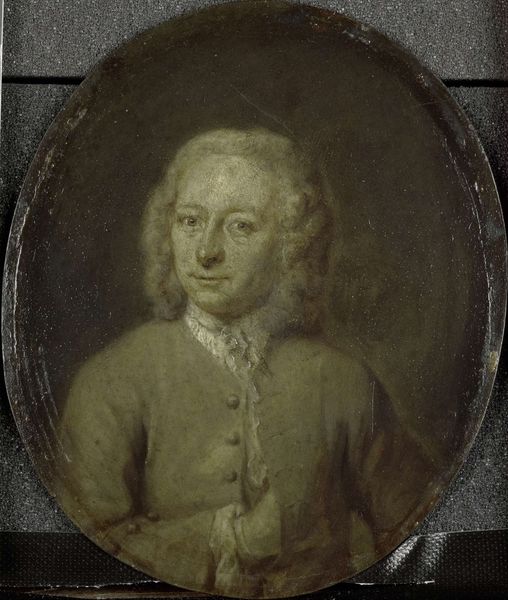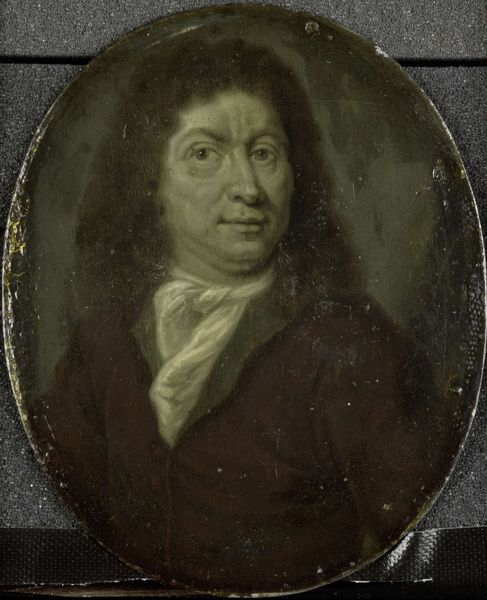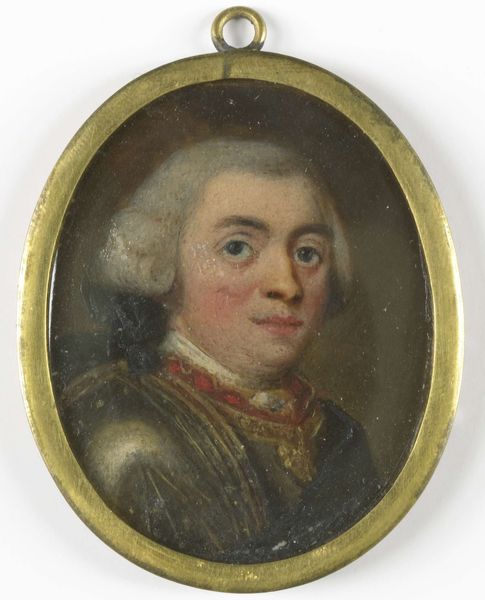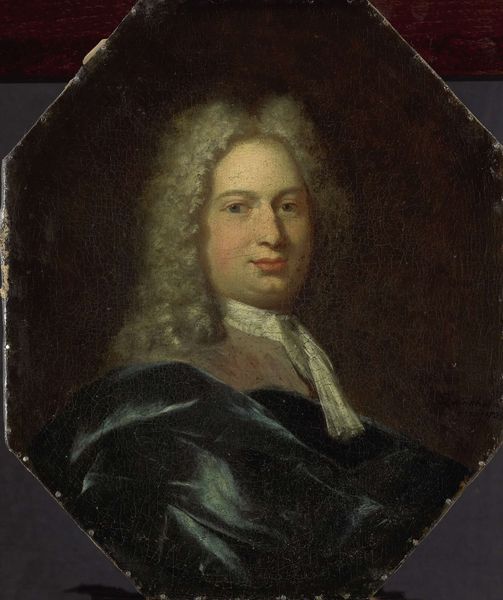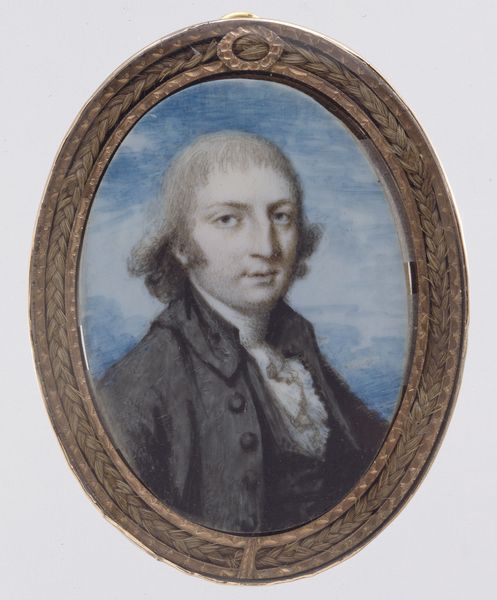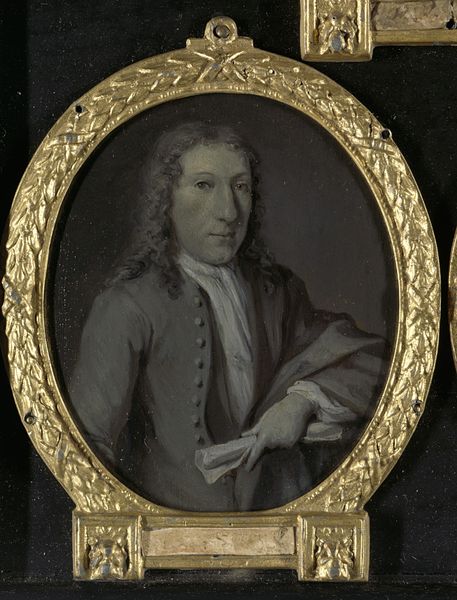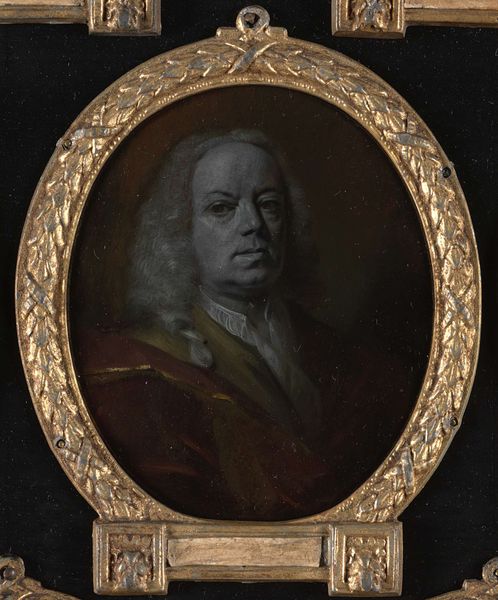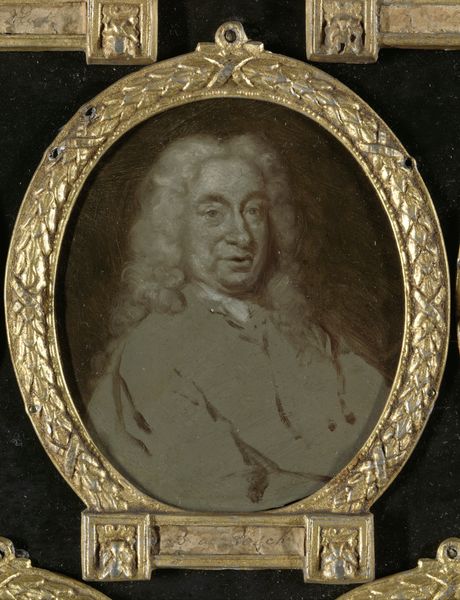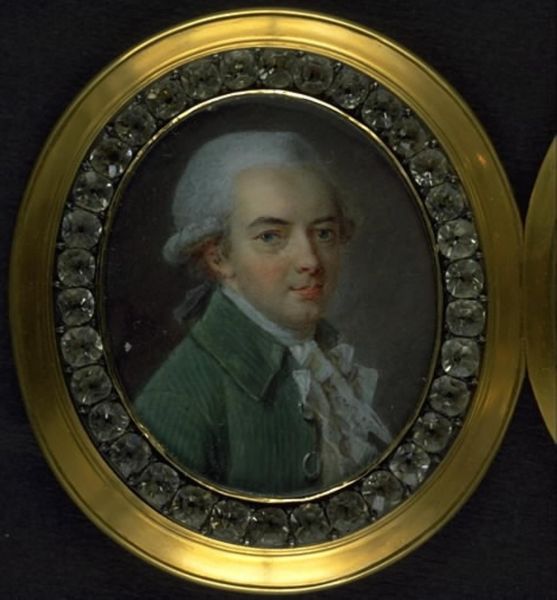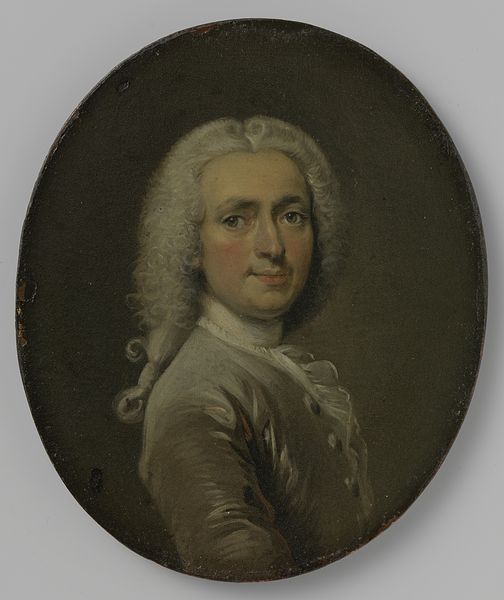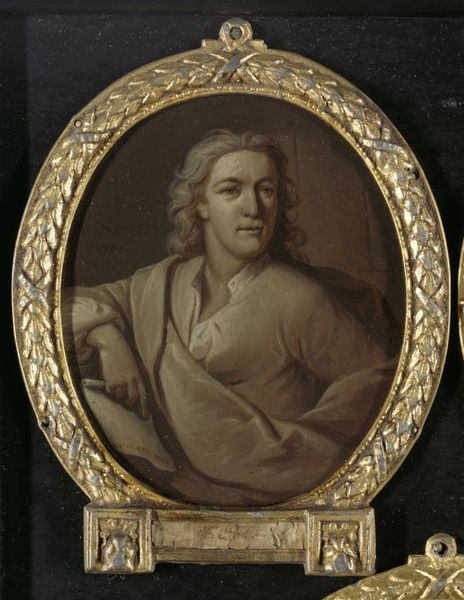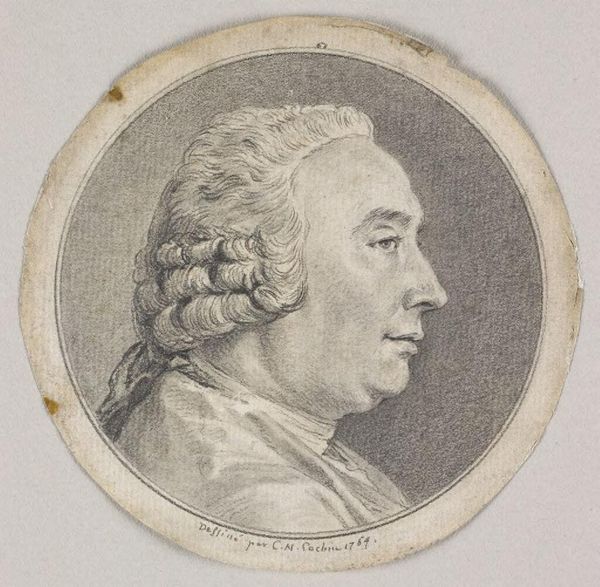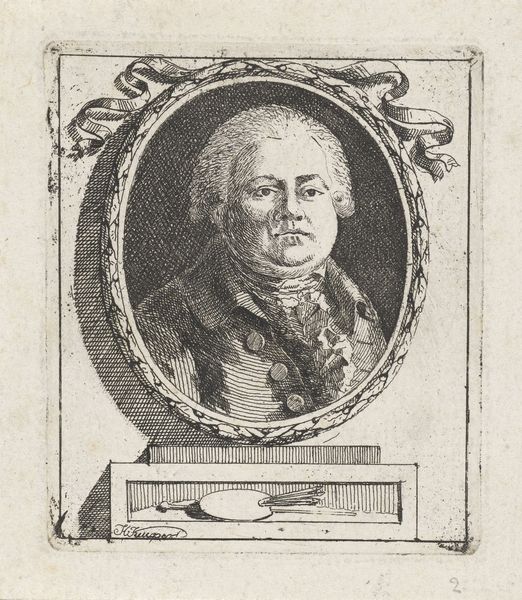
painting
#
portrait
#
baroque
#
painting
#
charcoal drawing
#
genre-painting
#
charcoal
#
watercolor
Dimensions: height 11 cm, width 9.5 cm
Copyright: Rijks Museum: Open Domain
Curator: This intriguing oval painting presents us with "Jason Pratensis (1486-1558), geneesheer te Zierikzee," created circa 1732-1771 by Jan Maurits Quinkhard. It feels rather intimate, doesn't it? Editor: It does, though my first impression is its somber mood and earthy palette. The subject's fur collar reads almost like a cloud, and his direct gaze gives a sense of contained power. It makes me wonder about his standing in his community. Curator: Absolutely. Note the directness of his gaze. Pratensis was indeed a respected physician. Clothing him in a fur collar subtly implies affluence and social standing. Remember that portraits in this period were powerful statements about a sitter's identity. It visually encodes his importance, offering a lasting impression of his social place for posterity. Editor: So, clothing acting almost as symbolic language. I wonder how it reflects access to materials and, in turn, to healing. Could the fur signify his connections and ability to provide comfort and care for the wider populace, or only to an elite segment? Curator: That's insightful! The symbol of the physician wasn't always of the learned man; sometimes he also adopted some visual connections to religious healers. Think of saints associated with health, such as Saint Cosmas or Damian. While this image leans into secular portrayal, could subtle references persist, subconsciously tying in ideas about wellness and morality with one's public image? Editor: Interesting parallel. The formal style could actually reinforce existing power dynamics. If access to medicine and representation were linked, consider who remained unseen. Whose narratives were never told in paintings such as this one? Curator: A crucial point. Reflecting on who has historically been able to commission or feature in art forces us to examine prevalent inequalities. Images possess incredible force, yet it's just as vital to contemplate omissions and how historical inequities reverberate. Editor: Precisely. In seeing this piece, while admiring Quinkhard's technique, let’s also remain attuned to the nuanced stories of privilege and absence ingrained within its composition. It's an engaging image that speaks volumes on several levels.
Comments
No comments
Be the first to comment and join the conversation on the ultimate creative platform.
